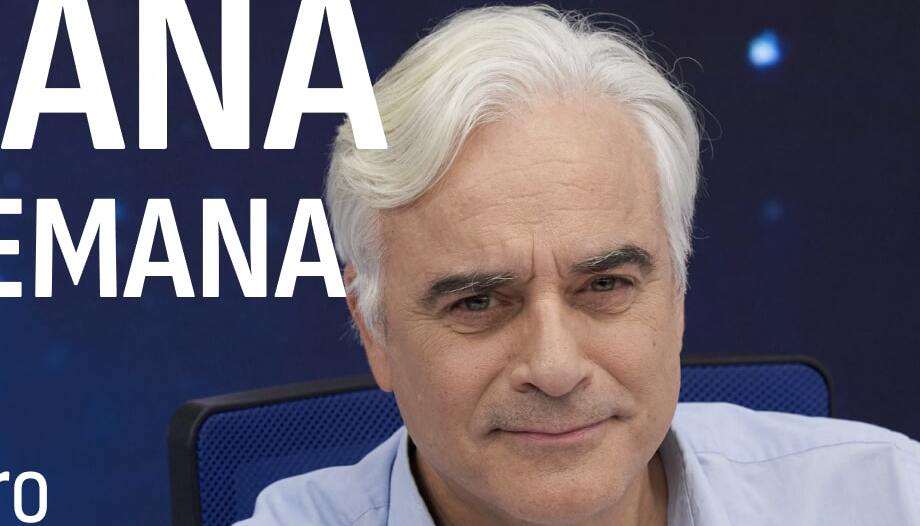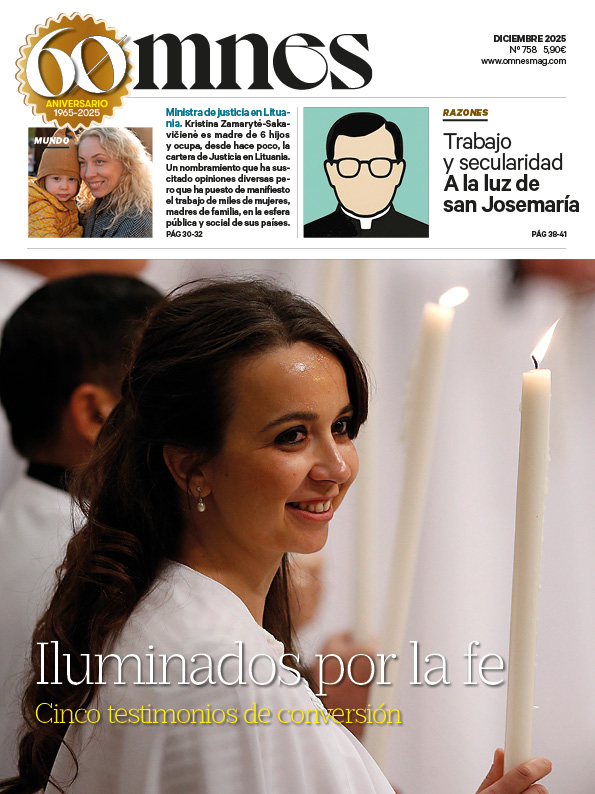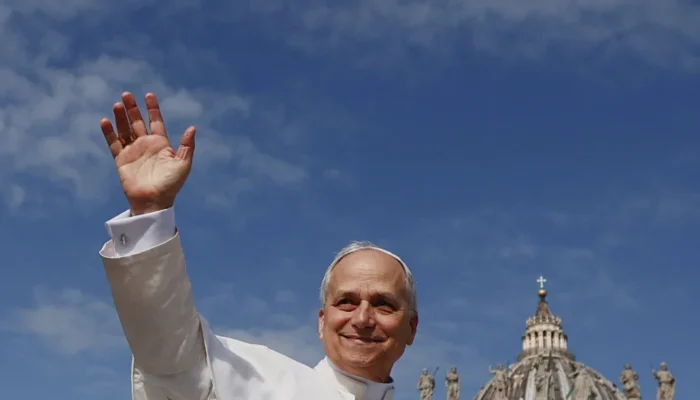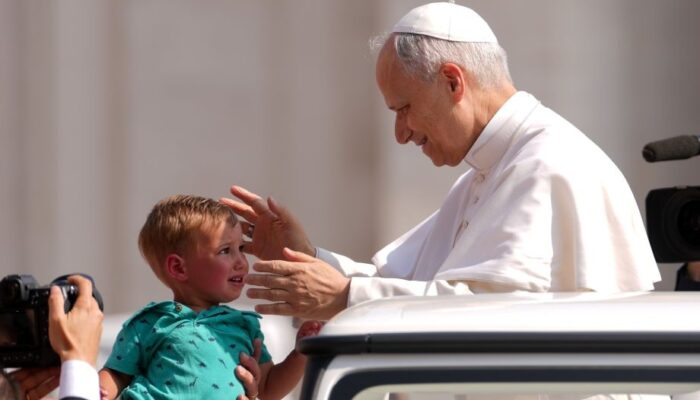"Very good morning to the early risers of the weekend, very good morning to the people-people, on this Sunday, December 8, in which we are going to be very cold. Attention to the warnings for rain, for water, for snow".
"Since 6 a.m. we have been telling you the news of the fall of Bashar al-Assad's regime in Syria. Bashar al-Assad is no longer the president". This is how his program began on December 8 Weekend Morning Fernando de Haro, an experienced journalist, who can be heard on weekends from 6 to 8:30 a.m. on the Cope radio station.
As you can see, in two and a half hours you can talk about many things. That day began with Syria. De Haro has been, and is, an international reporter, with several books and documentaries. He has also written essays, interviews, a biography on Luigi Giussani (The Momentum of a Life), and is the editor of paginasdigital.es
Now he has just published "The five to seven o'clock photo", edited by RenaissanceWe talked about the book and some current issues. Among them, the islam, Holy Land, Nigeria and Islamic fundamentalism, Lebanon or good journalism.
Why 'La foto de las siete menos cinco'? Fernando de Haro becomes a novelist, I thought at a glance.
- The title corresponds to the hour in which during the period 2018-2024 I worked in 'La Tarde' of Cope. At that time this mini-section was being broadcast. Now it has returned to be the 8.25 picture because I have returned to my program of origin: 'La Mañana del Fin de Semana'.
And the dedication to Mikel Azurmendi, one of the founders and spokesman of the Ermua Forum?
- Mikel Azurmendi was a fan of my commentary/description of a photo to close the program. In fact, those comments were the occasion to start a precious relationship. Mikel during his last years of life was a great friend, he still is and the relationship continues now that he has passed away. We accompanied each other on the road of life, with our questions and our searches, with the certainties we were acquiring. We accompanied each other in political, social and historical analysis, but above all in love and faith.
As director of 'La Mañana del fin de semana' on Cope, you discover that on Saturdays and Sundays at that hour "there are listeners, many listeners". Are they the same as at other times, or are they different? Do they like your 'sound photos' at 8.25 a.m. as well as those at five minutes to seven in the evening?
- When I started doing the program 14 years ago, we all thought that this radio time was a minor moment in the programming. But then we realized that there were many "weekend early risers". Many more than in other more traditional and better known radio programs. In fact, in this season I compete in some sections, with great radio stars. There is no EGM data on the minutes of the photo. But there are many people who tell me that they like that closing.
You are interested in the photos, because they are 'the prophecy of a victory'. This deserves an explanation, however brief.
- A photo fixes the present. It is what we all aspire to. We aspire for the present not to disappear and become a mere memory. The past only has value if it remains present. A photograph is a prophecy, only a prophecy, and therefore incomplete, open, of that past that is always present. In reality the present, this instant in which you are reading me, is the only solid thing. And the past is nothing if it is not now. That is the difference between tradition and traditionalism. There is too much traditionalism.
I admit that I have not read all the sound photos in the book, but I can say that they are superbly written, especially when I think that you write them in the middle of some advertising spots of the program. I don't see a common thread, they are very varied.
- It is true that the subject matter is very varied. But the photographs from the newspapers or from the informative websites from which I take them are very varied. Reality is complex, rich, it is made of children crying and laughing, of homeless people, of devastations, of desired hopes, of surprising and everyday gestures... The common thread is the writer's gaze and the listener's gaze that sees through what he he hears.
The five to seven o'clock photo
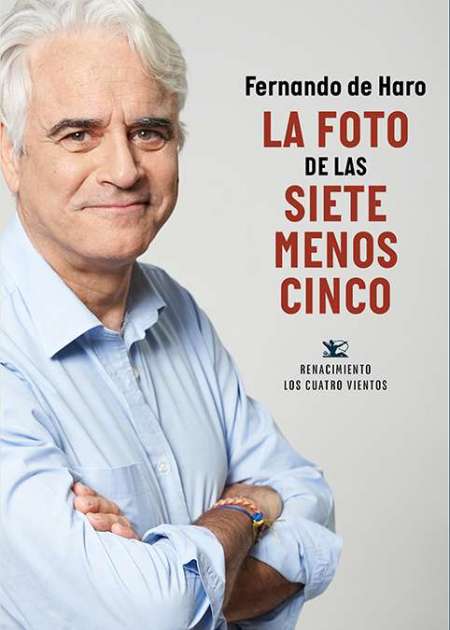
You have played many keys in the journalistic profession. But it seems that travel and international reporting have caught you...
- Fortunately, I have been able to travel in the last ten years to many corners of the planet to shoot some documentaries. It seems to me that to do good journalism you have to be in the place where things happen, no matter if that place is a village in northern Nigeria, or a street in Algeciras where an operation against drug trafficking is taking place.
I like to be on the spot to be able to understand and to be able to tell. What I want is to understand and for that I need to let myself be touched, to be moved, to be angry, to be afraid, to feel satisfaction, joy, to look people in the eyes?
From your books, it is clear that you are not interested in peaceful topics. In addition to 'Islam in the 21st century', you have written about the martyrs of Egypt, 'Christians and lions': the one hundred thousand Christians killed every year in the world, the Boko Haram terrorists...
- It seems to me that understanding Islam is decisive, it is an emerging religion with a growing weight in Europe. Islam must be distinguished from Islamism and jihadism. I have seen in Iraq and Syria Daesh graffiti written in German and other European languages of young people from the Western world who went to fight with "the Caliphate". The case of the Copts, the Christians of Egypt, is different. It is the case of an important minority. Not everything the Egyptian Christians do is intelligent. But they have learned after centuries that the dream of hegemony can destroy them.
In parallel, your concern for people who suffer and for telling stories that help these people is manifest. We have heard in your program some interviews about the displaced people in southern Lebanon, for example.
- You and I can lose our home, our land, at any moment. We live in the naivety that bad things are what happens to others. Compassion, suffering with others, is not a feeling, it is a way of using the reason that makes us human. The first impulse of any person is to make the need of others his own need. This first impulse should not be censured.
You have also reflected on Christians in the Holy Land or education in Gaza. It is Christmas time. To conclude, a few words about the Christians in the Holy Land...
- Christianity in the Holy Land is essential to understanding the nature of Christianity. Christianity, as the last two Popes have pointed out, is not just a doctrine or an ethic. Christianity is an event that happened in history, in a specific place and at a specific time. If it does not continue to happen, it becomes a system of ideas. Christianity in the Holy Land reminds us of this nature of event.


